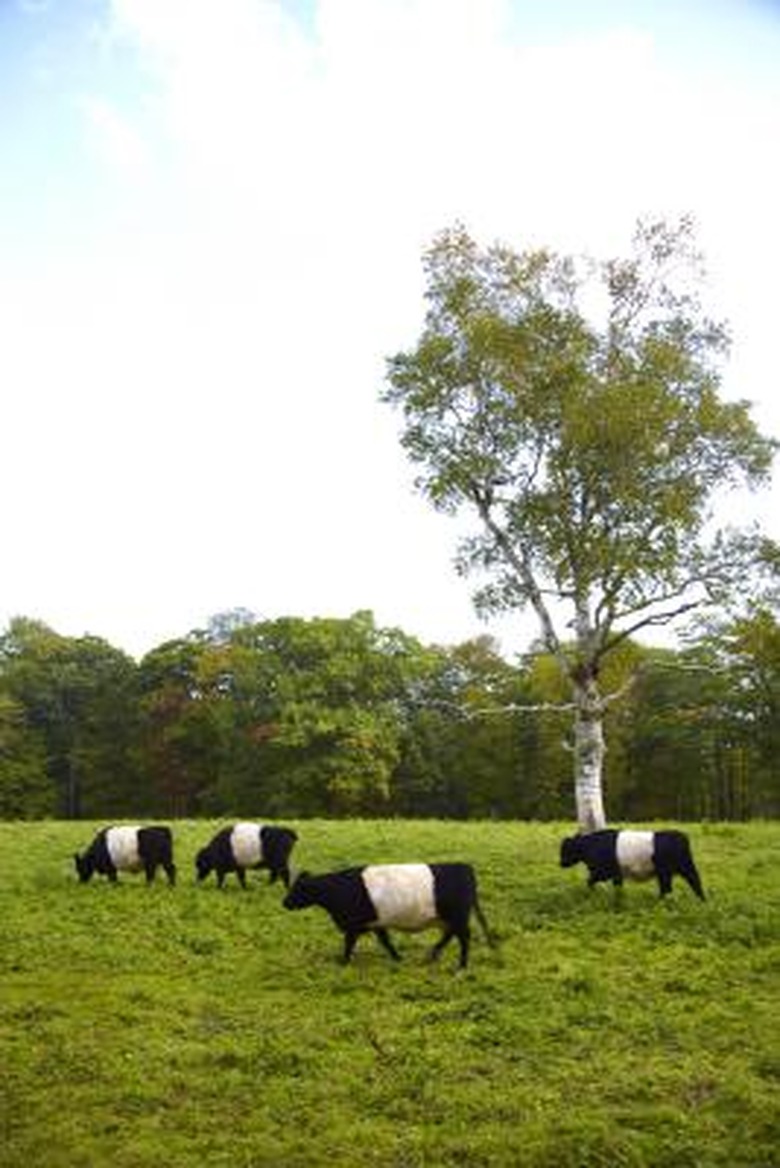Organisms In The Kingdom Monera
Taxonomists classify all life on Earth in one of five kingdoms. Members of the the first four kingdoms, Animalia, Plantae, Fungi and Protista, are all eukaryotic organisms. This means the cells of the organism, which can be single celled or multicellular, all have their genetic material contained in a nucleus. The fifth kingdom, Monera, contains all the single-celled organisms that do not possess a true nucleus. Members of the kingdom Monera are commonly referred to as bacteria.
Eubacteriophyta
Eubacteriophyta
Eubacteriophyta are the true gram-positive bacteria. Gram-positive means that these bacteria would give a positive result in a Gram's stain. Gram-positive bacteria have a higher peptidoglycan content than gram-negative bacteria, while gram-negative bacteria have a higher lipid concentration. Within this phylum, bacteria can be spherical (coccus), rod-shaped (bacillus) or corkscrew-shaped (spirillum).
Cyanophyta
Cyanophyta
This phylum of bacteria contains organisms that were once known as "blue-green algae." Today they are generally classified as cyanobacteria, as the absence of a nucleus clearly indicates that they are more closely related to the other bacteria than they are to algae. But like algae, cyanobacteria do contain chlorophyll and are able to photosynthesize. Some scientists speculate that the cyanobacteria are the precursors to chloroplasts in higher photosynthesizing organisms, such as algae and plants.
Proteobacteria
Proteobacteria
The most diverse phylum within the Monera kingdom, Proteobacteria includes nitrogen-fixing bacteria, which make nitrogen from the air available to plants and animals. Without them, life as we know it could not exist. Proteobacteria also includes the familiar E. coli and salmonella species of bacteria, well known for being potential agents of food poisoning.
Spirochaetes
Spirochaetes
These bacteria have a coiled shape, as their name suggests. Treponema pallidum, a bacteria within this phylum, causes syphilis in humans. Borrelia burgdorferi, another member of this group, causes Lyme disease. Not all spirochaetes are harmful to their hosts. Some of them live in the digestive tracks of termites where they contribute, along with other micro-organisms, to the termite's ability to digest cellulose. This is beneficial, at least to the termite.
Classification
Classification
It's worth noting that there are different schools of thought regarding classifying organisms. There is no "official" taxonomy of Monera into specific phyla. Indeed, many scientists subscribe to a system that does away with the kingdom Monera entirely, and the other four kingdoms as well, replacing this with a system in which all life is divided into three domains. Two of these would contain organisms formerly members of Monera, while all other life would be part of the third domain.
References
- Proceedings of the National Academy of Sciences; Spirochete and Protist Symbionts of a Termite...; Andrew Wier, et al.; 2002
- Wayne's Word: Major Divisions Of Life — Monera
- The Earth Life Web: Bacterial Classification
- Nova Publishers; Proteobacteria: Phylogeny, Metabolic Diversity and Ecological Effects; Maria L. Sezenna; 2011
- Proceedings of the National Academy of Sciences; Towards a Natural System of Organisms...; Carl Woese, et al.; 1990
Cite This Article
MLA
Breslin, Andrew. "Organisms In The Kingdom Monera" sciencing.com, https://www.sciencing.com/organisms-kingdom-monera-8527589/. 24 April 2017.
APA
Breslin, Andrew. (2017, April 24). Organisms In The Kingdom Monera. sciencing.com. Retrieved from https://www.sciencing.com/organisms-kingdom-monera-8527589/
Chicago
Breslin, Andrew. Organisms In The Kingdom Monera last modified August 30, 2022. https://www.sciencing.com/organisms-kingdom-monera-8527589/
